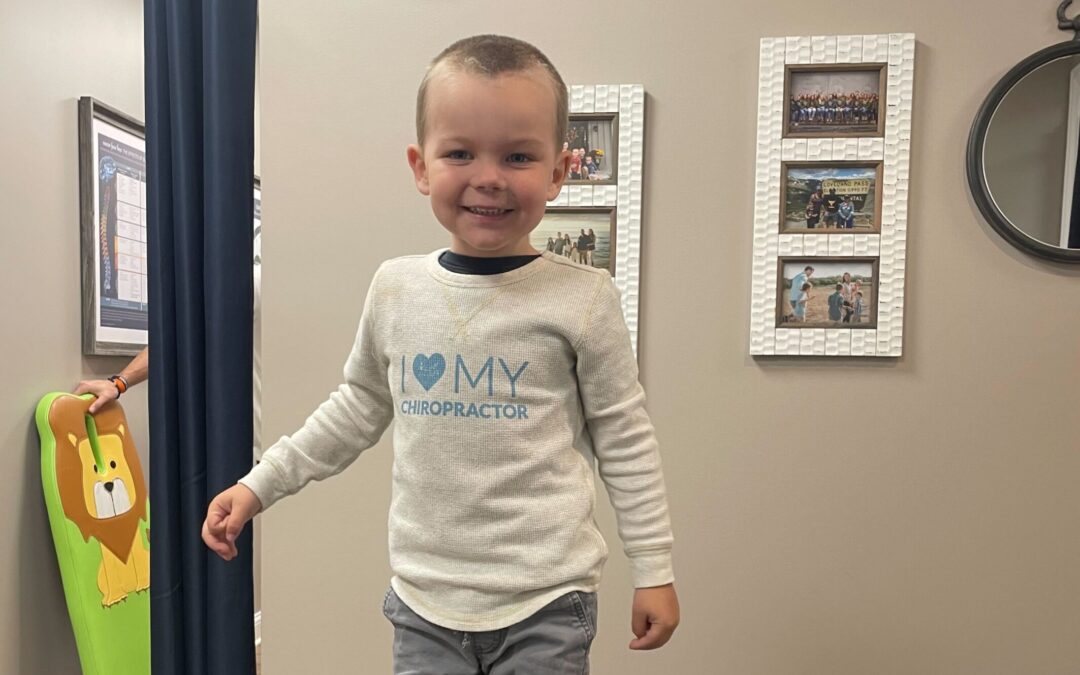The nervous system is a remarkable network that is pivotal in maintaining our overall health and well-being. This complex system directs responses to both internal and external stimuli, balancing our “fight or flight” response with restorative processes. The nervous system acts as a superhighway for communication in our bodies. It transmits signals between different parts of the body, allowing for coordinated movement, sensory perception, and advanced cognitive processes. The significance of nervous system regulation cannot be overstated, which is why it is so important that it is regulated and functioning properly.
This article delves into the concept of nervous system regulation and its significance in the context of children’s health. From sleep quality to stress management, understanding and nurturing the balance within the nervous system is essential for your child’s optimal development and lifelong well-being.
What is Nervous System Regulation?
Before we dive into the depth of nervous system regulation, it is important to grasp the fundamental workings of this system. The nervous system helps the body stay balanced and stable, keeping everything in the right order – which is called homeostasis. The significance of regulation spans a multitude of aspects, from sleep to controlling inflammation and managing cognitive functions. When this regulation falters, it can manifest as a wide range of issues affecting a child’s health and well-being.
Central vs. Peripheral Nervous System
The nervous system comprises two main components: the central nervous system (CNS) and the peripheral nervous system (PNS). The CNS, consisting of the brain and spinal cord, acts as the command center for all bodily functions, while the PNS extends its reach throughout the body, serving as a conduit for sensory and motor responses. The coordination between the CNS and PNS allows the body to respond to external and internal stimuli effectively, helping us function optimally and adapt to our surroundings. It is the cornerstone of our ability to interact with the world around us and respond to a wide range of stimuli and challenges.
The Autonomic Nervous System and its Dual Role
The autonomic nervous system (ANS) plays a pivotal role in regulating the body’s physiological and psychological well-being. It operates largely outside of conscious control and is also responsible for maintaining a state of equilibrium in response to various environmental and internal stimuli.
The ANS can be divided into two primary branches: the sympathetic nervous system and the parasympathetic nervous system. Here’s a deeper dive into those two branches and their crucial role in maintaining a child’s optimal health:
- Sympathetic Nervous System
- Often referred to as the “fight or flight” system. It is responsible for preparing the body to respond to perceived threats or stressors.
- When activated, the sympathetic nervous system releases stress hormones, which increase heart rate, raise blood pressure, dilate airways, redirect blood flow to the muscles, and heighten alertness. These responses are essential for dealing with situations that require quick action or intense physical effort.
- In a child, this system can be triggered by various stressors, such as encountering a challenging academic task, a competitive sporting event, or even a frightening situation. It helps the child respond appropriately by providing the energy and focus needed to navigate these stressors.
- Parasympathetic Nervous System:
- The parasympathetic nervous system is often referred to as the “rest and digest” system. It promotes a state of relaxation and recovery.
- When activated, the parasympathetic system slows the heart rate, constricts the airways, and directs blood flow toward digestive processes and restoration. This state is crucial for recuperation, digestion, and energy conservation.
- For a child, the parasympathetic system is engaged once a stressor is removed and during periods of rest, sleep, deep breathing, and after meals. It allows their body to digest their food, control and regulate inflammation and immune responses, and also kick in at bedtime when they are preparing for sleep.
- A child also relies more on the parasympathetic system when in learning and development mode.
Balancing these two systems is essential for a child’s overall well-being and development, ensuring they can respond to challenges while maintaining a state of relaxation when not under stress.
The Role of the Vagus Nerve in Regulation
Within the realm of the ANS, the vagus nerve is essential, connecting the brain to various organs and influencing the mind-body connection. The vagus nerve extends from the brainstem down to the abdomen, branching off to many major organs along the way, including the heart, lungs, and digestive organs. The vagus nerve plays a central role in regulating feelings of relaxation, often referred to as the “rest and digest” nerve, thus impacting a child’s overall sense of well-being. Understanding and nurturing the vagus nerve’s function is a crucial aspect of promoting a child’s development.
For children, the role of the vagus nerve is particularly essential in shaping their emotional and physical development. A well-regulated vagus nerve can help children manage stress, cope with challenges, and develop resilience. It can also impact emotional and social interactions, as it influences their ability to connect with others.
Symptoms and Consequences of Nervous System Dysfunction
Nervous system dysregulation is an imbalance in the nervous system, affecting its ability to regulate responses to stimuli. This dysregulation can result in various physical, emotional, and cognitive disturbances. It can be triggered by factors like birth trauma, physical injuries, chronic stress, toxins, and inflammation.
The “Perfect Storm” theory and related concepts that we developed are built upon the view that nervous system dysregulation begins early and progresses over time. As mentioned, this process can begin with factors like high-stress pregnancies, birth interventions (c-section, vacuum, forceps, etc.), and traumatic life experiences. This leads to stress stuck on the nervous system, also known as subluxation, which then leads to the neurological condition known as dysautonomia. Dysautonomia has a large array of symptoms and related health challenges.
Nervous system dysregulation is different from a full-fledged disease but can lead to more serious disorders if ignored. Symptoms can manifest as physical discomfort, cognitive and emotional challenges, and changes in behavior.
Health challenges related to nervous system dysregulation include sensory, autism, anxiety and mood disorders, sleep disturbances, constipation and gut issues, and respiratory and immune system challenges. Therapies like physical, occupational, and psychotherapy may offer some relief but often have limited results because they are not getting to the root cause of the challenge.
Nervous System Regulation and Gut Health
Many natural health and integrative providers will seek to regulate the nervous system by focusing on gut health and the microbiome, but so often, it is nervous system dysregulation that altered gut health and the microbiome in the first place. This deep focus on the “gut-brain” and nervous system connection is especially common in the autism and autoimmune world.
For parents, therefore, this can be a tricky scenario that feels like the age old “chicken or the egg” question of which comes first – gut health or brain and nervous system health?
While they are both obviously vitally important and definitely interconnected, it’s important to know that the health and regulation of the nervous system is the single most important foundational step for healing from any condition, including autism.
The Role of Chiropractic Care in Nervous System Regulation
Neurologically-Focused Chiropractic Care is the key to promoting nervous system regulation in children. The first step to managing and nurturing the regulation of your child’s nervous system begins with one crucial step – scheduling an appointment at a PX Docs office to have Neurological INSiGHT Scans performed.
These scans are absolutely transformative in that they can do things that no other examination or assessment can even come close to:
- They can detect subluxation, dysautonomia, and nervous system dysregulation
- They can quantify and measure the degree of subluxation present
- They can identify and target the exact subluxation patterns disrupting neurological communication and dysfunction
- They can be used to track functional and objective progress as neurological healing takes place over the course of the care plan
You simply cannot provide adequate Neurologically-Focused Chiropractic Care without relying on the INSiGHT Scans to serve as the cornerstone of care provided. Having these scans and the “neuro-metrics” they provide enables our PX Docs to offer the most precise, individualized, and tailored care possible for each and every patient, from infants to adults.
Summary: Key Takeaways About Nervous System Regulation
The nervous system plays a crucial role in one’s health, beginning with brain and neurological development in a child and continuing to influence our daily lives throughout adulthood. Therefore, when the regulation of the nervous system is compromised, quality of life can deteriorate rapidly.
What’s more, because most traditional medical professionals have limited knowledge of how to accurately assess, monitor, and restore neurological function and regulation, most children deal with nervous system dysregulation for years before finding solutions that are natural and drug-free. That is what is provided by the Neurogically-Focused Chiropractors in our PX Docs Network.
Neurologically-Focused Chiropractic Care focuses on restoring optimal function and balance to the nervous system, especially the central and autonomic nervous system, with particular attention to the vagus nerve, which plays a crucial role in regulating the nervous system.
Our distinctive approach does not aim to treat or cure nervous system dysregulation but instead addresses the underlying causes of subluxation, dysautonomia, and vagus nerve dysfunction head-on. Our patients experience remarkable enhancements in their quality of life once the care begins and neurological healing accelerates!
Discover the potential of Neurologically-Focused Chiropractic Care and determine if your child or yourself may benefit from enhancing nervous system regulation by visiting our directory and scheduling an appointment with your local PX Doc for your INSiGHT Scans.
The first step toward a drug-free healing journey for your child is to obtain these remarkable scans and understand precisely how their nervous system is functioning. Locate a PX Doc and embark on the first step toward a healthier, more vibrant life for your child and entire family!





